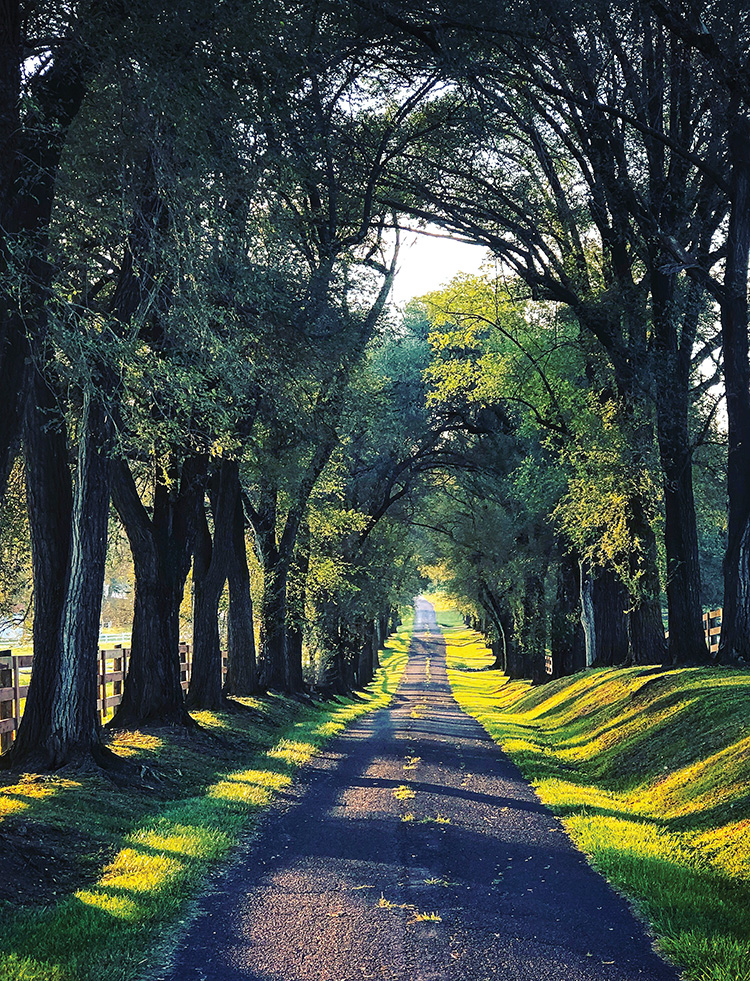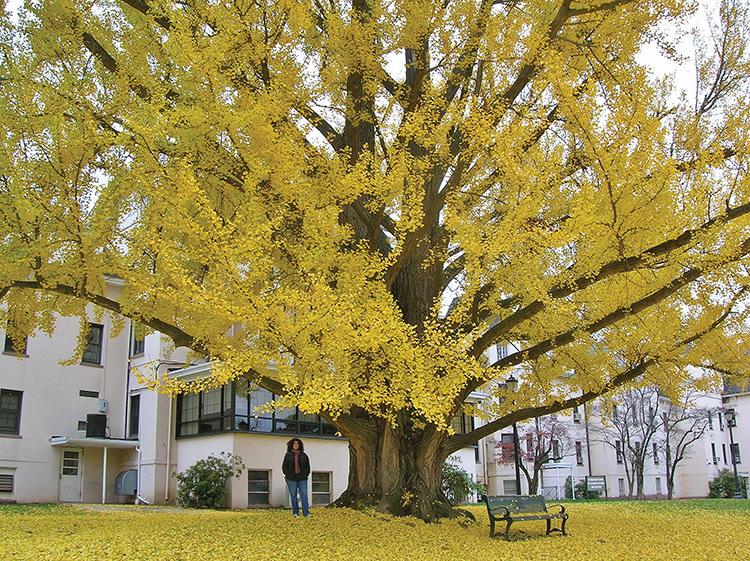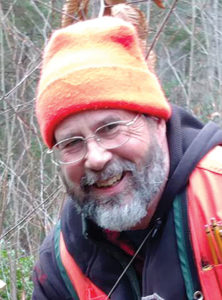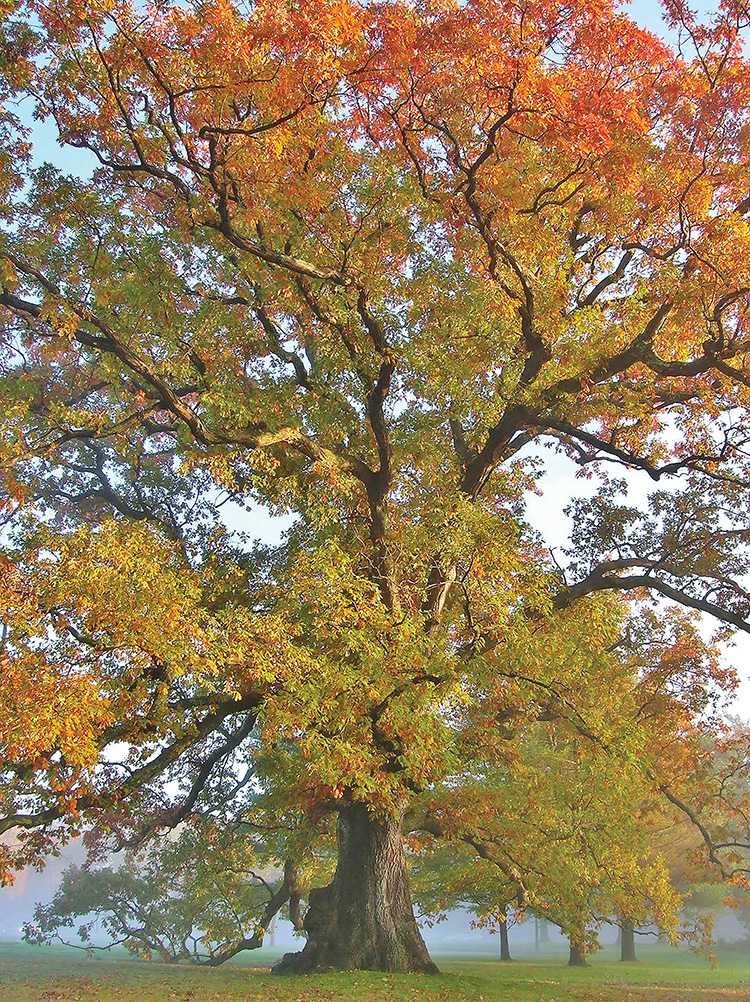By Jeffrey Ward, CAES
NOV-DEC 2018 – Coming from the corn fields of the Midwest 30 years ago, I was immediately struck by how forested Connecticut was, and still is. We live in a tree lovers paradise.
Did you know that Connecticut’s urban communities have the highest tree cover of any state at 62%? It seems Nutmeggers have a natural yearning for homes nestled on tree-lined streets, for parks shaded by majestic trees, and for avenues flanked by leafy colonnades.
The question arises – why? What are the benefits that trees provide us, both tangible and perceived, that make us want to live surrounded by them.

Trees are important to our environment and our quality of life in myriad ways. Trees beautify our surroundings and impart a healing serenity that enhances well-being and reduces stress. Their greening buds and cheerful flowers herald the arrival of spring and their brilliant colors forecast the change from summer to winter.
Trees clean the air we breathe, provide food and habitat for wildlife, and play a vital role in protecting wetlands, watersheds, aquifers, and groundwater supplies. But the trees go far beyond these contributions, providing a broad range of personal, community, and global benefits.
Personal Benefits
Trees increase our sense of relaxation and well-being. They absorb some of the noise pollution common in an urban environment, reducing stress. At the same time, the soothing sound of leaves rustling in the wind masks sounds of the outside world. Trees, especially conifers, release essential wood oils (phytoncides) that lead to further relaxation.
In Japan, the practice of Shinrin-yoku or forest bathing is the concept of wandering through a forested area, even a small patch of woods, and immersing yourself in nature. Research has found that this practice has positive impacts on blood biochemistry (cortisol, glucose), cardiovascular health, and the immune system.
Recent research has documented the very real, positive effects of trees in our increasingly urban environment. A study found that girls living in Chicago public housing had better concentration and improved self-discipline when green spaces, including trees, were outside their buildings.
Another study published in the journal Science found that hospital patients with a view of trees recovered faster with fewer complications. On a personal note, I am always in a good mood after spending a day working in woods.
Money may not grow on trees, but trees do provide real financial benefits. Cooling costs during the dog days of summer can be reduced by 30 percent or more with properly planted trees. Trees cool buildings by both reflecting sunlight and by absorbing some of the sun’s energy. This energy is dissipated by transpiration – the evaporative loss of water through the leaves. The cooling effect of trees also benefits communities by reducing the need for investment in additional energy infrastructure such as power plants.
In the winter, trees along streets serve as windbreaks and reduce strong, gusty winds, especially near tall buildings.
The USDA Forest Service has developed a fairly simple tool, i-Tree Eco (itreetools.org/eco) that allows you to determine the benefits of the trees on your property (or your town, if you are ambitious).

Community Benefits
Trees in our cities and towns provide both quality of life and financial benefits. For example, they can reduce crime. A study in Chicago found that apartment buildings with greenery cut property crime and violent crimes by roughly half. Residents reported higher quality of life with reduced littering, graffiti, and rowdy neighbors.
Trees were also associated with reduced crime in Baltimore, Philadelphia, and Portland, Ore. It is truly remarkable that the simple act of planting and caring for trees increases a neighborhood’s community spirit. Some of the money spent on caring for trees would be offset by the decreased cost of policing and cleaning litter and graffiti.
People drive slower on tree-lined streets. This increases traffic safety because increased speed is directly linked with increased accidents. It is also possible that the increased serenity provided by trees may decrease the stress of driving in congested traffic. Trees also serve as a buffer between pedestrians and traffic.
Trees increase the environmental quality of our communities. They provide habitat and shelter for urban wildlife as varied as squirrels and songbirds, chipmunks and robins.
Trees reduce air pollutants by removing both aerosols (sulfur dioxide, ozone, nitrogen oxides), and up to 10 percent of particulates (fine dust).
Trees improve air quality by shading and cooling asphalt streets. This decreases the volatilization of the binding oils in asphalt and has the additional benefit of extending the life of paved surfaces. It was estimated that Connecticut’s community forests annually provide $94.8 million worth of air pollution remediation.
Trees increase water quality in several ways. First, areas with tree cover both reduce and cleanse storm water runoff. Soils protected by tree roots and fallen leaves acts as a giant sponge that absorbs the rain from all but the largest of storms.
Did you know that soils on average can hold one to two inches of water for every foot of depth? During the growing season, most of this stored water is absorbed by trees and other vegetation before being released through the leaves via evapotranspiration. This process not only maintains tree health, but also helps cool our environment.
With the loss of leaves during the dormant season, evapotranspiration is greatly reduced and the extra water absorbed by the soil slowly infiltrates into the groundwater before percolating out in seeps and streams. Without this tree-enhanced process, streams would quickly dry up after a few weeks without rain.
At the same time, the tree covered soils gently filter the water before it enters our streams, rivers, and drinking water reservoirs. Where storm drains are directly connected to wastewater treatment plants, the water absorbed by trees reduces the amount of water that has to be treated. The nitrogen, phosphorus and other chemicals absorbed by trees reduces the negative effects of nutrient loading in our rivers and Long Island Sound.
Trees also improve water quality by reducing soil erosion. Trees reduce soil erosion by both holding soil in place and by reducing the impact of falling rain, which can move soil particles. Soil erosion is a major cause of sedimentation in our streams and rivers. This sediment can choke aquatic vegetation by covering in with a fine layer of silt, clog vital transportation routes, and carry pesticides directly into waterways.
Trees provide distinct benefits for our business community. A study in seven American cities reported that trees and landscaping increased the time and money people were willing to spend in a shopping district by increasing their sense of the area’s amenities, comfort, and quality.
In the keen competition of today’s marketplace, a small increase in customer volume can mean the difference between profitability and failure.
Trees can benefit businesses beyond the retail level. Quality landscaping, including trees, has been found to have a high correlation with building occupancy rates.
Another study reported that productivity increased and absenteeism decreased in offices buildings with trees nearby.
Local governments can benefit by the presence of healthy trees. Although there are costs associated with maintaining a quality urban forest, there are real and tangible benefits. As previously mentioned, trees can help reduce the cost of road maintenance, wastewater treatment, building heating and cooling, public safety, and litter collection. An additional benefit is increased real estate tax revenue because trees increase property values.
A more intangible benefit is the sense of community that trees impart, be it the American elms on the New Haven Green, the Pinchot sycamore in Simsbury, or the trees in Bushnell Park. Planting and caring for trees provide an opportunity for neighbors to work together and strengthen the community.
Global Benefits
Trees also play an important role in reducing the effects of climate change. The increase in human-generated atmospheric CO2 and its link to global warming have been at the forefront of environmental news.
One means of reducing CO2 is by trees absorbing the gas through their leaves and storing it as carbon in their wood. For every ton of wood that a tree produces, about 1.5 tons of CO2 are removed from the air. In Connecticut, our community forests currently store 25 million tons of sequestered CO2 and are sequestering an additional 767,000 tons each year. While only 2 percent of our total carbon emissions, it is equivalent to twice the CO2 emitted by cars. It is good to know that the simple act of planting a tree is one way of showing your commitment to the local and global community.

Jeffrey S. Ward, Ph.D., is chief scientist with the Department of Forestry and Horticulture at The CT Agricultural Experiment Station in New Haven. Author of more than 100 papers, his research has focused on the dynamics of long-term herbaceous and tree populations, invasive species control, and forest management. He is immediate past chair of New England Society of American Foresters (NESAF), secretary of the CT Tree Protection Examination Board, and an advisor to Audubon CT. He was a past president of the CT Tree Protective Association and Forest Science Coordinator for the New England Society of American Foresters.
